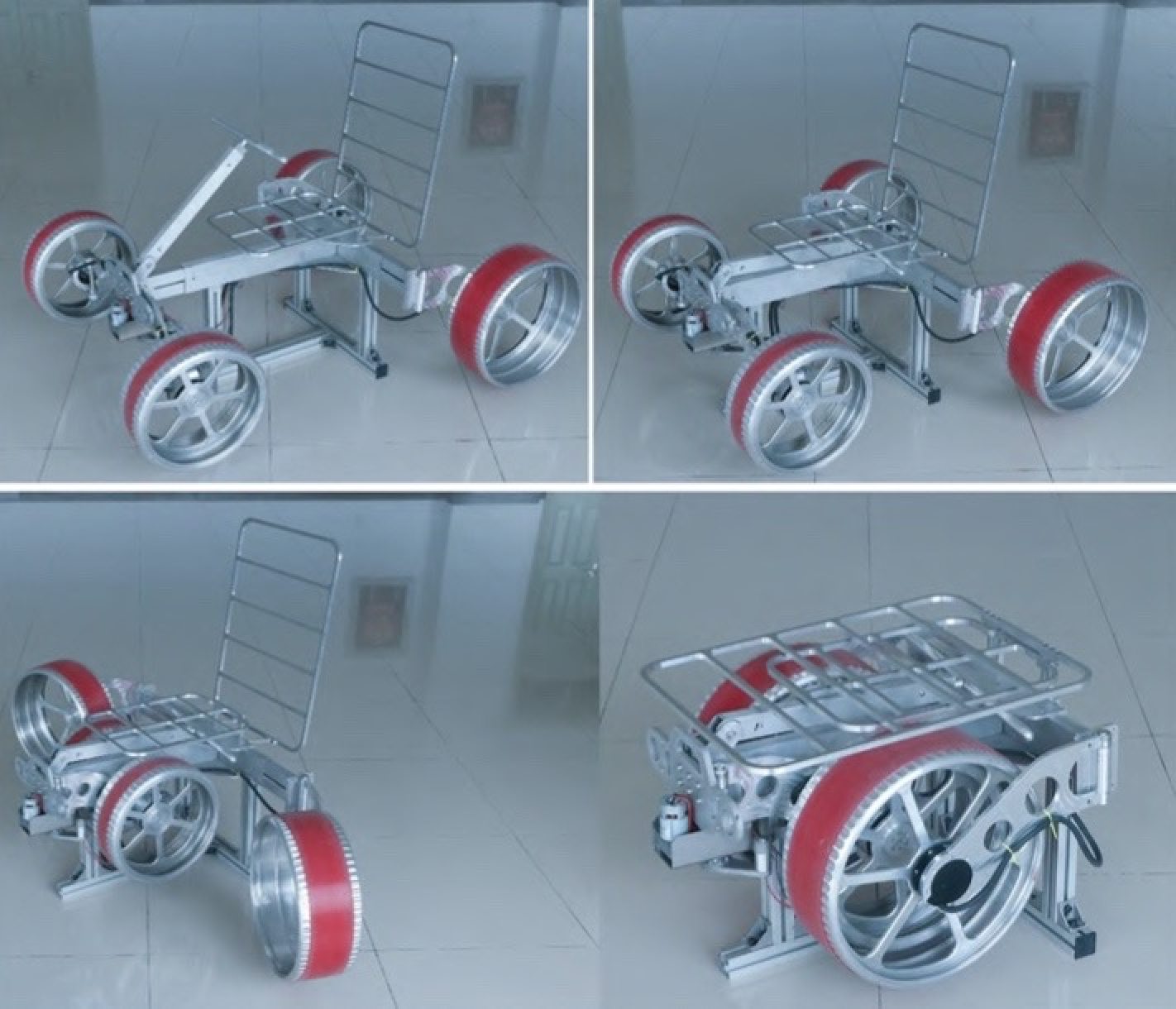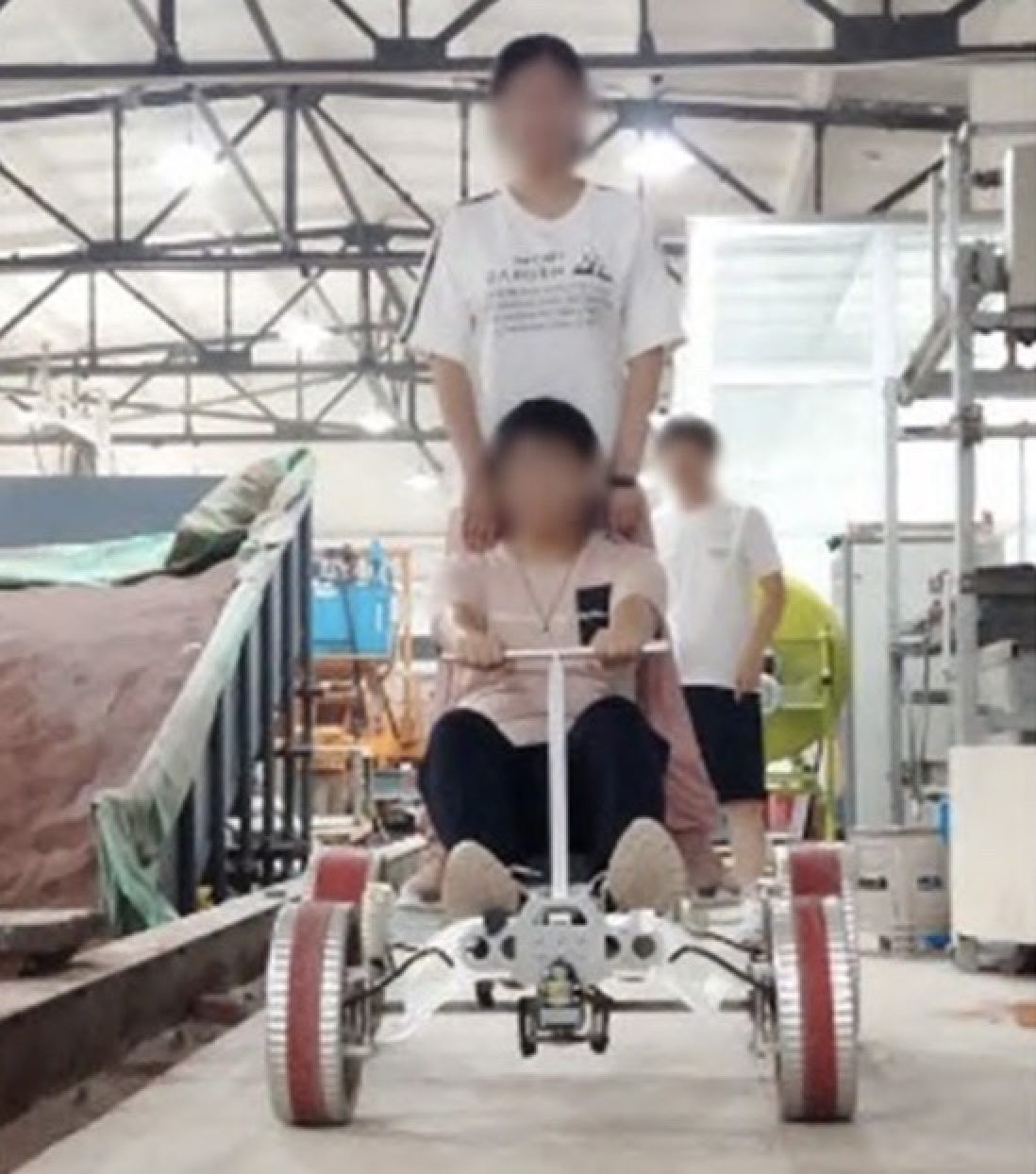The Cubic Emergency Lunar Vehicle of China can be folded and tucked into the back of a regular roving vehicle. CELV can carry one person seated in the front while a second stands at the back and can travel up to 10km/h on the moon’s surface, say researchers. — SCMP
Researchers in China looking to future moon missions have developed a small, foldable vehicle to use for an emergency return to the lunar base or for short trips around the base.
The 40kg (88lb) four-wheeled buggy, which is about the size of a mini bar fridge when folded and tucked in the back of a regular roving vehicle, can be easily expanded and has a maximum speed of 10km/h (6.2mph), according to the team from Jilin University and the China Academy of Space Technology.

During performance tests, the Cubic Emergency Lunar Vehicle of China (CELV), rolled over 10cm (4 inch)-high obstacles and climbed an incline up to 20 degrees, they reported in the March issue of the Chinese-language journal Optics And Precision Engineering.
CELV, which is all-metal and nearly 2m (6.5 feet) long when unfolded, carried two people weighing a total 130kg during the tests. One sat in the front seat and the other stood on a pedal at the back.

The vehicle is designed to hold a 90kg payload on the lunar surface, equal to about 540kg on Earth where the gravity is around six times that on the moon.
CELV was small, lightweight and very flexible, the researchers said. “Astronauts only need to pull or rotate certain parts to expand it, while no assembly or major adjustment is involved in the process,” they wrote in the paper.
CELV will be powered by two electric motors, one in each of its rear wheels. Its front wheels are equipped with steering motors to allow a 30-degree turn.
While the researchers dropped components such as an operation panel to simplify the vehicle’s structure, they specifically incorporated shock absorption to make the ride more comfortable.
“The development of an emergency return vehicle for lunar exploration is crucial for future crewed Chinese lunar exploration missions,” wrote Zou Meng, from the Key Laboratory of Bionic Engineering at Jilin University, and his co-authors.
“Our results show that the vehicle can achieve a high folding ratio... with a simplified steering structure, improved transmission efficiency, as well as greater adaptability, stability and comfort during travel.”
So far, the United States is the only country that has run crewed vehicles on the moon. During the last three Apollo missions in the early 1970s, Nasa astronauts drove “moon buggies” more than a total 90km on the lunar surface and collected more than 280kg of rocks to bring back to Earth.
In recent years, spacefaring nations such as the US, China and Japan have been developing pressurised manned rovers and vehicles with robotic legs to traverse the moon and Mars.
Nasa plans to land astronauts on the moon in late 2025, while China aims to make its first ever lunar landing around 2030. – South China Morning Post





